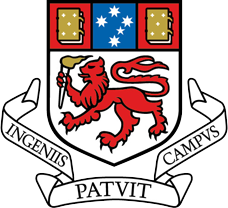University of Tasmania
| University of Tasmania | |
|---|---|
 | |
| Motto | Ingeniis Patuit Campus ("The Field is Open to Talent") |
| Established | 1890 |
| Type | Public |
| Chancellor | Damian Bugg |
| Vice-Chancellor | Prof. Daryl Le Grew |
| Staff | 2,383 (2008) [1] |
| Undergraduates | 16,487 (2008) [1] |
| Postgraduates | 4,215 (2008) [1] |
| Location | Hobart, Launceston and Burnie, Tasmania, Australia |
| Campus | Urban |
| Affiliations | ASAIHL ACU |
| Website | www.utas.edu.au |
The University of Tasmania (UTAS) is a public Australian university based in Tasmania, Australia. Officially founded on 1 January 1890, it was the fourth university to be established in nineteenth-century Australia. The University is a sandstone university and is a member of the international Association of Commonwealth Universities.
The University of Tasmania offers various undergraduate and graduate programs in a range of disciplines. The University has also been consistently ranked in the top 10 universities in Australia for research and boasts links with 20 specialist research institutes, cooperative research centres and faculty based research centres; all of which are regarded as nationally and internationally competitive leaders. The University has a student population of 22,000, including approximately 3,000 international students and 1000 PhD students.
History

The University of Tasmania was officially opened on 1 January 1890, being founded by an Act of the Colony of Tasmania's parliament. Richard Deodatus Poulett Harris had long advocated the establishment of the University and became its first warden of the senate. The first degrees to graduates admitted ad eundem gradum and diplomas were awarded in June 1890. Referred to as one of the original sandstone universities, it was the fourth university to be established in Australia, and today maintains a strong reputation as a small to medium-sized university. The first campus location was the Queen's Domain in Hobart, but as enrolment numbers grew and study interests expanded, the new campus at Sandy Bay was developed in the early 1940s.
The university was reorganised in 1991 when it merged with the Tasmanian State Institute of Technology, which became the Newnham Campus. The centre at Burnie was opened in 1995.
Reforms to Higher Education by the Australian Government in 2004 lead most Australian universities to increase their HECS fees. UTAS remained the only Australian university not to do this, until July 2008 when Vice Chancellor Professor Daryl Le Grew announced that the university would increase HECS fees by as much as 25% from 2009. This increase affected all units except education, nursing and mathematics.
The university and TAFE Tasmania are the only remaining institutions of higher education in Tasmania. The Australian Maritime College (AMC) integrated with the university in 2008.
Campuses
The University of Tasmania has three campuses.
- Hobart - the Hobart campus is set on 100 hectares of land in the suburb of Sandy Bay – a short distance from the centre of Hobart. Much of the upper campus is in natural bushland. Closer to the city centre are the Tasmanian Conservatorium of Music, the Clinical School (and more recently the medical sciences building) and the Tasmanian School of Art. About 10,000 students are enrolled at the Hobart campus.
- Launceston - the Launceston campus is set on 50 hectares at Newnham overlooking the Tamar River, ten minutes from the centre of Launceston.Students studying Visual and Performing Arts and Architecture are located at the Inveresk campus. Over 5000 students are enrolled at both campuses.
- Cradle Coast - the Cradle Coast campus is located in the city of Burnie. This campus was established in 1995 as the North-West Study Centre.
Organisation and Administration
The University of Tasmania is organised into six faculties.
Faculty of Arts
- Tasmanian Conservatorium of Music
- Riawunna (a centre for Aboriginal studies)
- School of Asian Languages & Studies
- School of English, Journalism & European Languages
- School of Government
- School of History & Classics
- School of Philosophy
- School of Sociology & Social Work
- School of Visual & Performing Arts
- Tasmanian School of Art
Faculty of Business
- School of Accounting and Corporate Governance
- School of Economics and Finance
- School of Management
Faculty of Education
- School of Education
Faculty of Health Science
- School of Human Life Sciences
- School of Medicine
- School of Nursing & Midwifery
- Tasmanian School of Pharmacy
- Rural Clinical School
- Department of Rural Health
Faculty of Law
- Centre for Legal Studies
- Law School
- Tasmanian Law Reform Institute
Faculty of Science, Engineering & Technology
- School of Agricultural Science
- School of Aquaculture
- School of Architecture
- School of Chemistry
- School of Computing & Information Systems
- School of Earth Sciences
- School of Engineering
- School of Geography and Environmental Studies
- School of Mathematics and Physics
- Institute of Antarctic and Southern Ocean Studies (IASOS)
- School of Plant Science
- School of Psychology
- School of Zoology
- Marine Research Laboratories
- Institute for Regional Development
In addition to the faculties listed above, the University has six theme areas through which multidisciplinary and interdisciplinary collaborations in research and research training, learning and teaching, and community engagement are fostered. The theme areas are: Antarctic and Marine Science; Community, Place and Change; Environment; Frontier Technologies; Population and Health; and Sustainable Primary Production.
The university also has a 334 hectare property located 20 km from the Hobart campus. The University Farm is set in the cropping and grape growing area of Cambridge located in the Coal River valley, serving the teaching and research needs of the School of Agricultural Science.

No comments:
Post a Comment